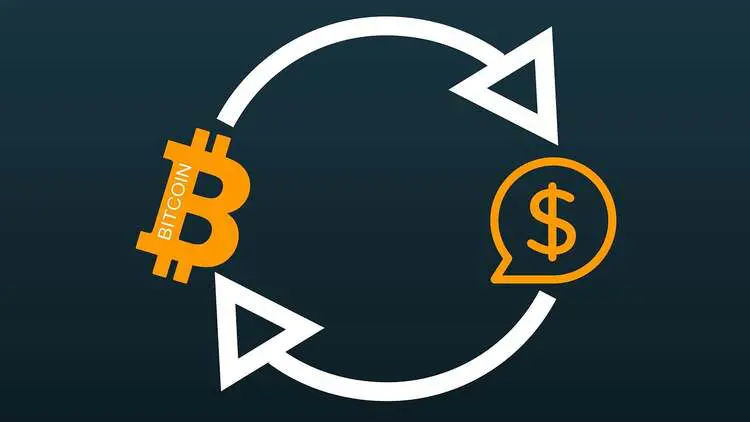Cryptocurrency Mining for Beginners
Cryptocurrency Mining for Beginners: Cryptocurrency mining has rapidly evolved from a niche hobby to a substantial industry, attracting both technology enthusiasts and serious investors.
This guide aims to demystify cryptocurrency mining for beginners, explaining its fundamental concepts, practical steps, and the potential rewards and challenges involved.
For “Cryptocurrency Miners,” whether you’re just starting or looking to deepen your understanding, this article provides a solid foundation to navigate the fascinating world of mining digital currencies.
What is Cryptocurrency Mining?
Cryptocurrency mining is the process by which transactions for various forms of cryptocurrency are verified and added to the blockchain, the digital ledger underlying these currencies.
Mining is also the means through which new cryptocurrency coins are created.
Miners use powerful computers to solve complex mathematical problems that validate transactions and maintain the integrity of the blockchain.

How Does Cryptocurrency Mining Work?
1: The Blockchain and Proof of Work
*Blockchain: At its core, a blockchain is a decentralized ledger of all transactions across a network. When a transaction is made, it is grouped into a block and added to the chain.
*Proof of Work (PoW):This is the consensus algorithm used by many cryptocurrencies (like Bitcoin) to validate transactions and create new blocks.
Miners compete to solve a cryptographic puzzle, and the first one to solve it gets to add the new block to the blockchain and is rewarded with cryptocurrency.
2: Mining Hardware
*CPUs and GPUs: Initially, miners used Central Processing Units (CPUs) to mine cryptocurrencies.
However, as the difficulty of mining increased, Graphics Processing Units (GPUs) became the standard due to their higher processing power.
*ASICs: Application-Specific Integrated Circuits (ASICs) are specialized hardware designed specifically for mining.
They offer higher efficiency and performance compared to GPUs but are more expensive.
3: Mining Software
*Mining Programs:Various software options are available, each compatible with different hardware setups.
Popular options include CGMiner, BFGMiner, and EasyMiner.
*Mining Pools: Joining a mining pool allows miners to combine their computational power, increasing their chances of solving a block.
Earnings are distributed among participants based on their contributed hash power.
4:Energy Consumption and Efficiency
*Energy Usage: Mining requires significant energy, which can lead to high electricity costs.
Efficient hardware and access to low-cost electricity are crucial for profitable mining.
*Heat Management: Mining rigs generate substantial heat, necessitating proper cooling solutions to maintain performance and hardware longevity.

Getting Started with Cryptocurrency Mining
1:Choosing the Right Cryptocurrency
*Bitcoin: The most well-known and widely mined cryptocurrency. However, its high difficulty level makes it less accessible for beginners.
*Alternative Coins (Altcoins): Cryptocurrencies like Ethereum, Litecoin, and Monero can be more beginner-friendly due to their lower mining difficulty and hardware requirements.
2: Setting Up Your Mining Rig
*Hardware Selection: Decide whether to start with a GPU or invest in an ASIC. For beginners, GPUs offer a balance of performance and flexibility.
*Software Installation: Choose mining software compatible with your hardware and the cryptocurrency you wish to mine. Follow installation guides and configure your settings.
*Joining a Mining Pool: Increase your chances of earning rewards by joining a mining pool. Research and select a pool with favorable terms and a good reputation.
3: Understanding Mining Economics
*Initial Investment: Consider the costs of hardware, software, and setup. ASICs require a higher initial investment compared to GPUs.
*Operating Costs: Factor in electricity consumption, cooling, and maintenance. Use profitability calculators to estimate potential returns based on current market conditions.
*Earnings and Rewards: Understand how mining rewards are calculated and distributed. Track your earnings and adjust your strategy as needed to maximize profitability.
Cryptocurrency Mining for Beginners: Challenges and Considerations
1:Market Volatility
*Cryptocurrency Prices: The value of mined coins can fluctuate significantly, affecting profitability. Stay informed about market trends and adjust your operations accordingly.
*Difficulty Adjustments: As more miners join the network, the difficulty of mining increases, potentially reducing individual earnings. Monitor difficulty levels and explore mining less competitive coins if necessary.
2:Regulatory Environment
*Legal Considerations: Cryptocurrency mining regulations vary by country and region. Ensure compliance with local laws to avoid legal issues.
*Tax Implications: Understand the tax obligations related to mining income. Keep accurate records of earnings and expenses for tax reporting purposes.
3:Security and Risks
*Hardware Risks: Mining hardware can fail due to continuous operation and high heat. Invest in quality equipment and proper cooling systems to mitigate risks.
*Cybersecurity: Protect your mining setup from cyber threats. Use strong passwords, keep software updated, and consider hardware wallets for storing mined coins securely.
Real-Life Examples and Case Studies
1: Small-Scale Mining Operations
*Home Mining: Many beginners start with a small-scale setup at home, using spare GPUs or purchasing a few new ones. This approach allows them to learn the ropes without significant financial risk.
*Case Study: A hobbyist miner invested $1,000 in a GPU rig and joined a mining pool. After six months, they recouped their investment and continued to earn modest but steady income from mining altcoins like Ethereum and Zcash.
2:Large-Scale Mining Farms
*Professional Mining: Large-scale operations involve substantial investments in ASICs and infrastructure. These farms often locate in regions with low electricity costs and favorable regulations.
*Case Study: A mining farm in Iceland, leveraging the country’s geothermal energy for low-cost power, operates hundreds of ASICs to mine Bitcoin. The operation demonstrates the importance of efficiency and scale in achieving profitability.
Cryptocurrency Mining for Beginners: Tools and Resources
1:Profitability Calculators
*Websites like WhatToMine and CoinWarz offer tools to estimate mining profitability based on hardware, electricity costs, and current market conditions.
2: Mining Forums and Communities
*Engage with online communities like Bitcointalk, Reddit’s r/EtherMining, and dedicated Discord channels to stay updated on industry trends, seek advice, and share experiences.
3:Educational Resources
*Explore online courses, tutorials, and guides to deepen your understanding of mining concepts and best practices.
Platforms like Coursera, Udemy, and YouTube offer valuable content for beginners.
Cryptocurrency Mining for Beginners Conclusion
Cryptocurrency Mining for Beginners: Cryptocurrency mining presents an exciting opportunity to participate in the growing digital economy.
While it involves significant investment and risk, understanding the fundamentals and staying informed about industry developments can lead to rewarding experiences.
For beginners, starting with the right hardware, joining a mining pool, and continually learning from the community are key steps to success.
As the market evolves, so too will the opportunities and challenges, making adaptability and ongoing education essential for long-term profitability.
Further Reading and Exploration
*Books: “Mastering Bitcoin” by Andreas M. Antonopoulos offers an in-depth look at Bitcoin and its underlying technology.
*Websites: CoinDesk and CoinTelegraph provide up-to-date news and analysis on cryptocurrency and blockchain technology.
*Online Courses: Consider enrolling in courses on platforms like Coursera and Udemy to gain structured knowledge and practical skills.
By equipping yourself with the right knowledge and tools, you can navigate the complexities of cryptocurrency mining and potentially reap significant rewards. Happy mining!







